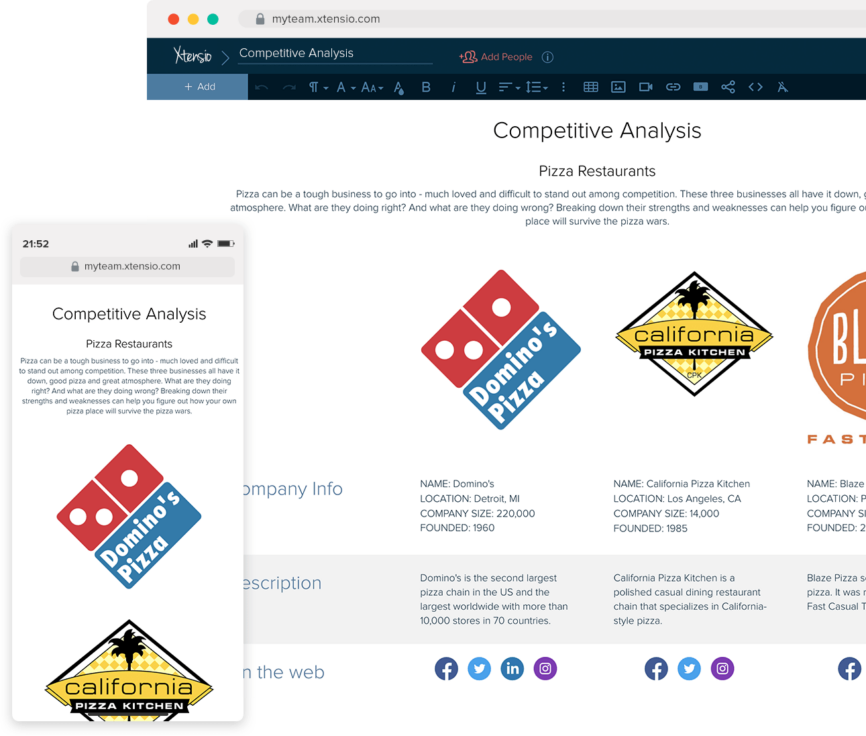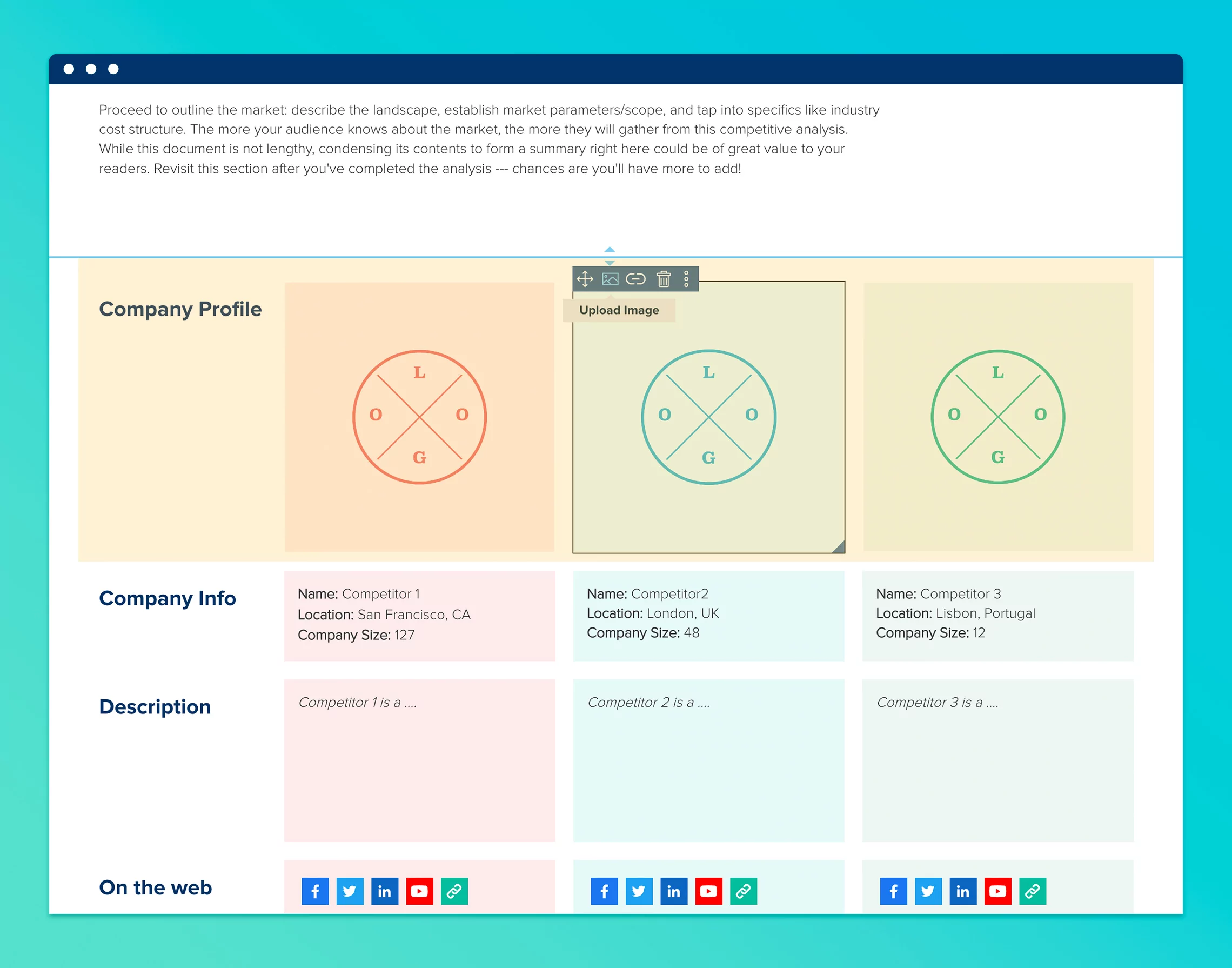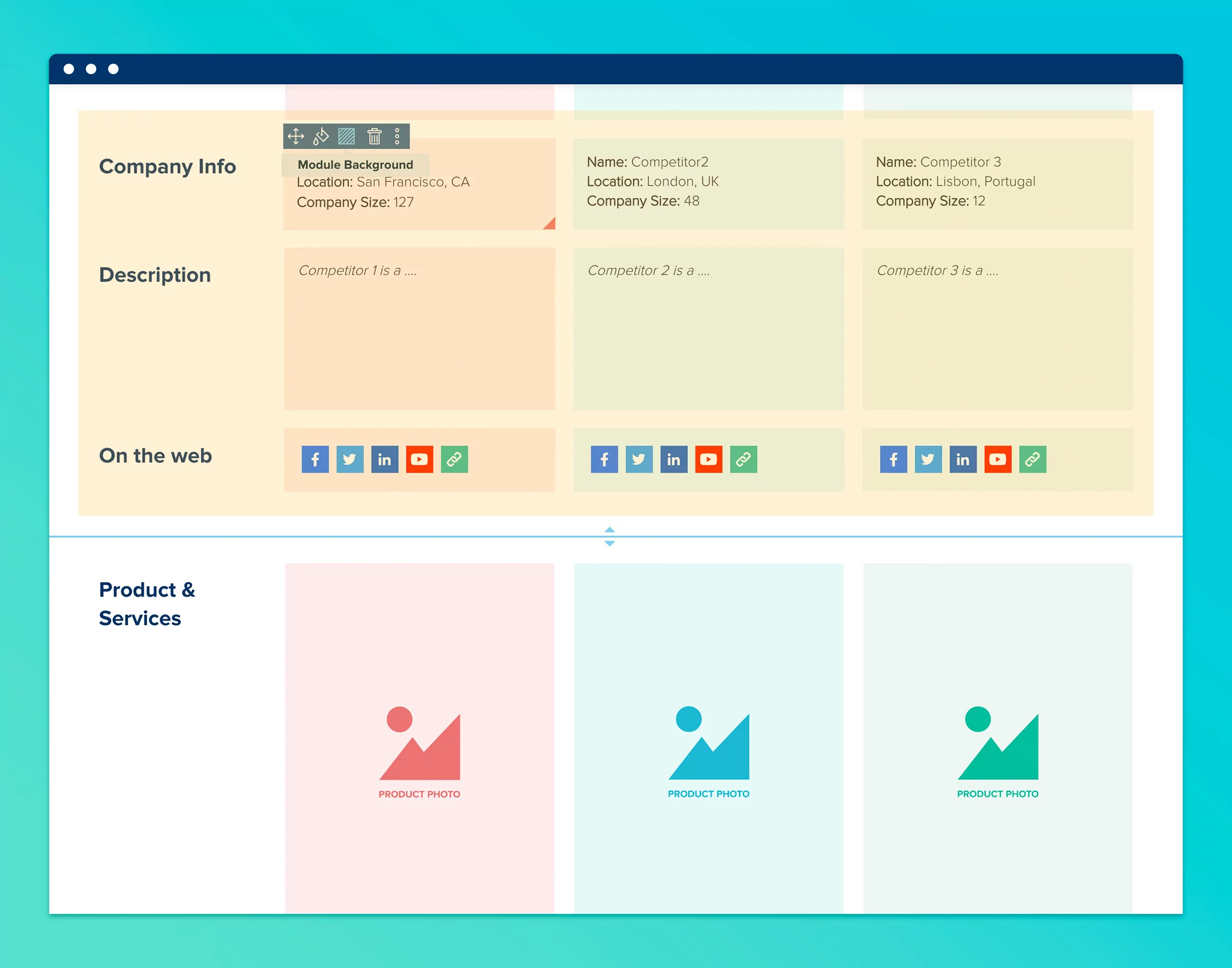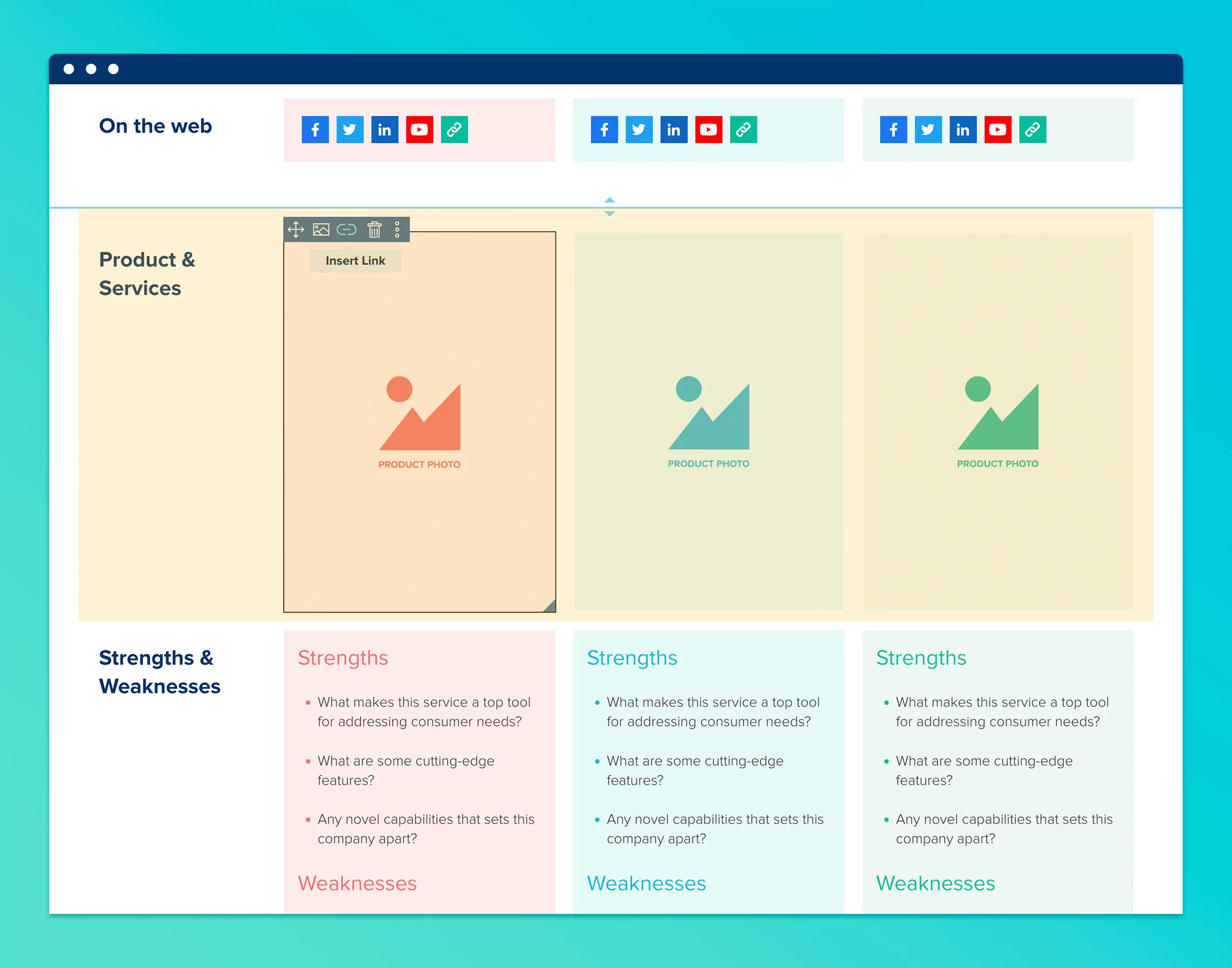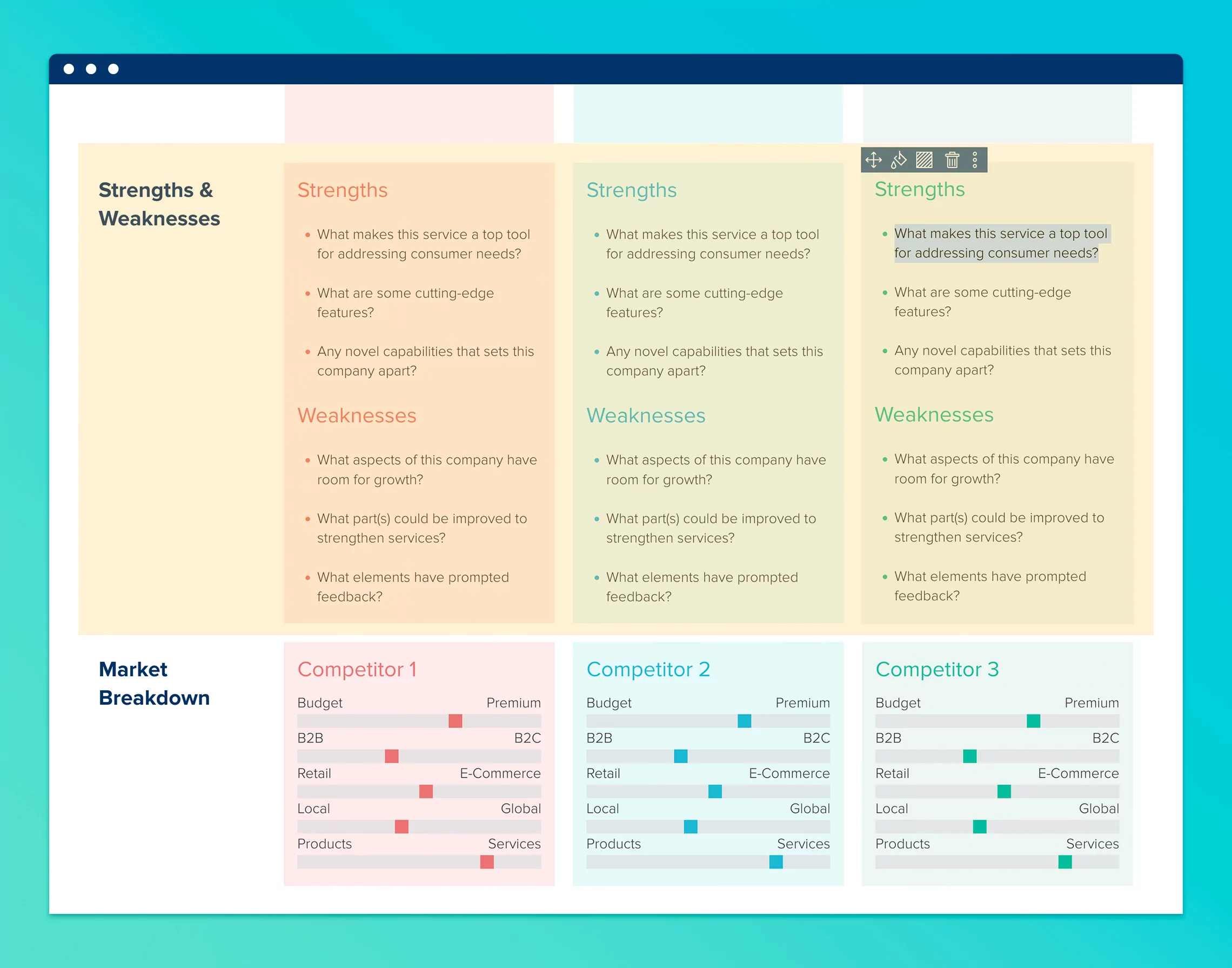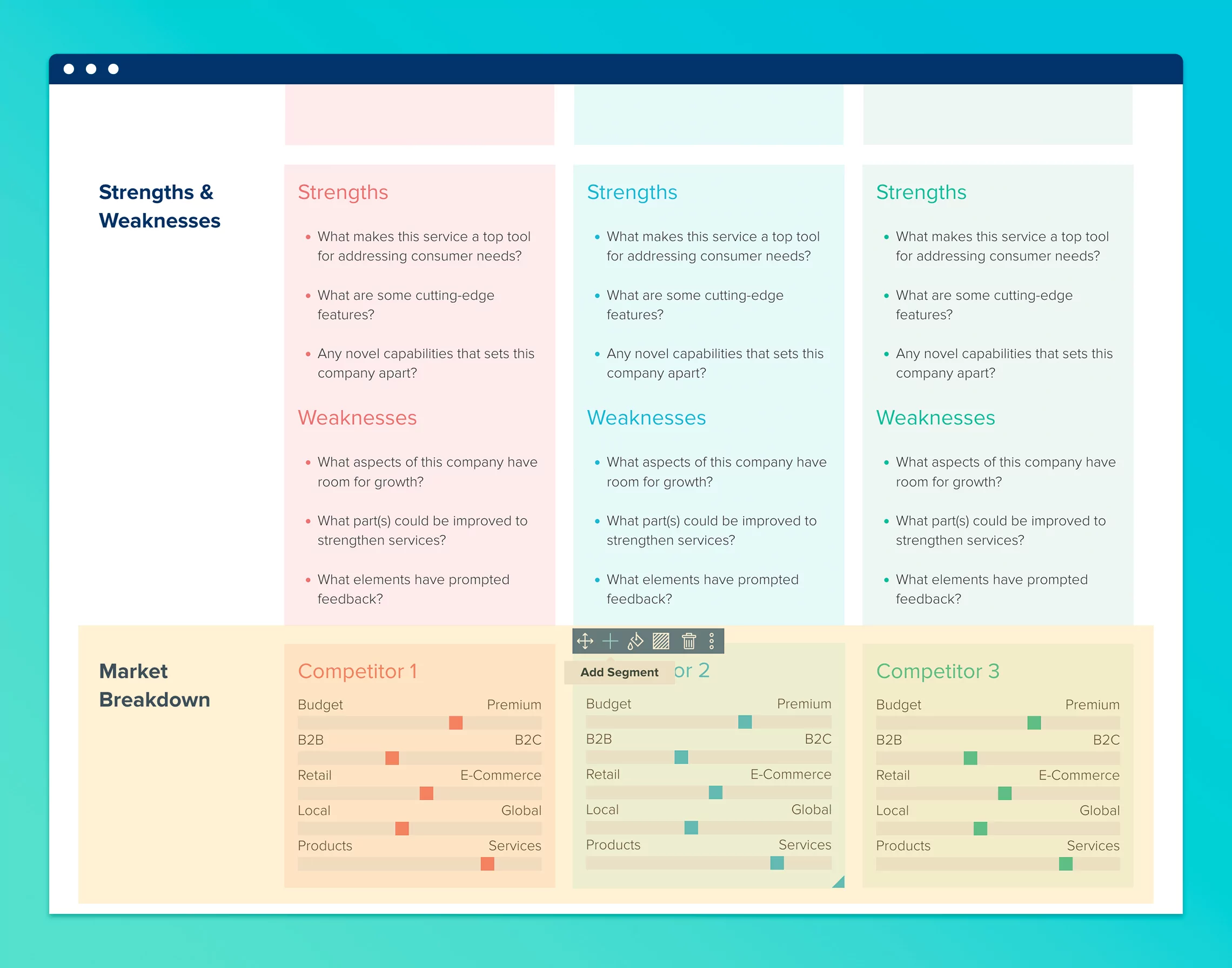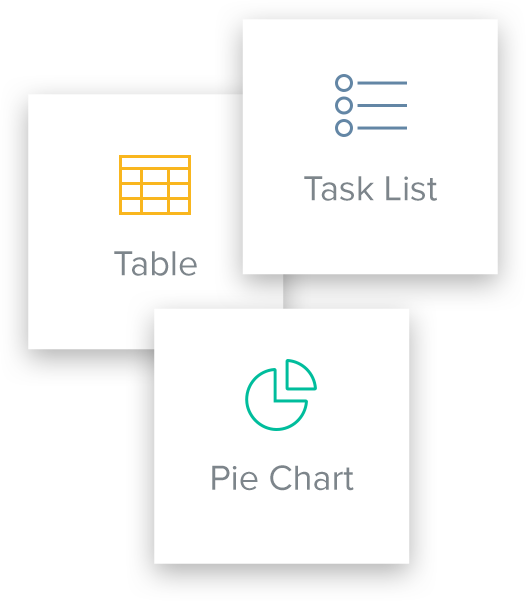How To Write A Competitive Analysis
Updated by Xtensio
Your competitor analysis framework should give your stakeholders an overview of how the playing field looks. A side-by-side comparison with top competitors helps teams strategize better, plan business growth and provide a clearer vision for the organization. When creating a competitive analysis, you should first consider defining the criteria for the comparison. Common high-level pieces are company information, description, products or services, strengths and weaknesses, and market fit. Explore this template.
Xtensio is your team space for beautiful living documents.
Create, manage and share business collateral, easily.
Table of Contents
First things first…
Before you begin, we encourage you to define your target audience. Who will be examining this document? Internal team, stakeholders, potential investors, etc? Will they have consistent access to this document? Will this report be presented? Answering these questions first will help guide the language and content of your analysis.
This is a basic format — do not feel as though you must stick to it. Our tools are here to provide you with a little inspiration and direction, not restrict you to a box. Do your research and ask more questions — you might find unique criteria where opportunities for your company reveal themselves.
Logo
A logo offers a brief glimpse into a company’s branding language. This section will quickly provide your audience with that value, as the different colors and imagery will give life and organization to your document by separating the competitors’ brands from each other. When it comes to adding your competitors’ logos, make sure to use high-quality images. Including words like “vector” and “high-res” to your Google search will bring in superior results. Make sure your logos are consistent across the board. (Most companies have both with-text and without-text logo variations — double check to make sure it’s the same format for each of your competitors.)
Free Resource: Brands of the World
Company Information
The metrics you provide here will depend on the depth of your research. Be sure to keep it consistent by including criteria that can be answered for all competitors. Providing specific, additional information for just one competitor will give your document a bias. As far as gathering publicly available information, here are the first places to look. For company size, LinkedIn is a great resource for discovering the approximate number of employees. Financial details? Check Yahoo Finance and Wikipedia for relevant information. Want to get an idea of their website’s traffic and ranking score? Search on AngelList, Crunchbase.
Description
A company’s slogan, tagline, mission statement and unique value proposition — all of these are important when determining how you stack up against your competitors. What is the company’s key positioning and how does it compare with other companies in this space? How do they describe themselves? This section is your opportunity to include what you feel is valuable descriptive information.

More resources! Use some of our other templates to define your unique value proposition:
On the web
Nowadays, it’s a requirement for any company to live on the internet. This section gives you and your team easy access to your competitors’ online presence. Include links to the social media channels and webpages your competition has the most activity on. By providing these links, your audience can quickly determine what channels the companies take advantage of the most and how they use them to tell their brand story. Understanding why and how the competition’s online presence is performing successfully or poorly can expose the potential.
Product
Whether it’s a food truck or mobile app, every business has a product or service to offer. Find an image that captures your competitor’s offering and upload it to the template. Again, social media will be a great resource for discovering imagery for this section.
Strengths & Weaknesses
It’s easy to notice what your competition is doing wrong, but what about the things they’re doing right? To compete, you must dissect all aspects of your competition by completing a SWOT analysis. What are their customers happy about? What are they complaining about? Use this opportunity to dive into some qualitative competitor analysis. Go online and gather YouTube and Facebook comments, check out conversations on Twitter. If you can interact with your competitors’ customers face-to-face, go out and talk to them. You can use all of this information to your advantage.
Market Breakdown
What’s each competitor’s position in respect to the market landscape criteria? Add new data pieces to compare across the board. This will help your audience understand the market and where your competitors stand in relation to one another.
So there you have it, Xtensio’s Competitive Analysis Template. Remember this document is super flexible — you’re not bound to use any category the way we have it. Click inside text modules and type away, add new modules, graphs, charts, images, etc, drag & drop to reformat — whatever the case is, make something great. And if you’re working on a team, add your colleagues to join in the editing process with Xtensio’s collaboration feature.

Bonus: After completing your Competitive Analysis, fill out the Business Model Canvas sample to re-evaluate your unique value proposition. Deepen your analysis of the competitive landscape with other strategic frameworks.
That’s a wrap!
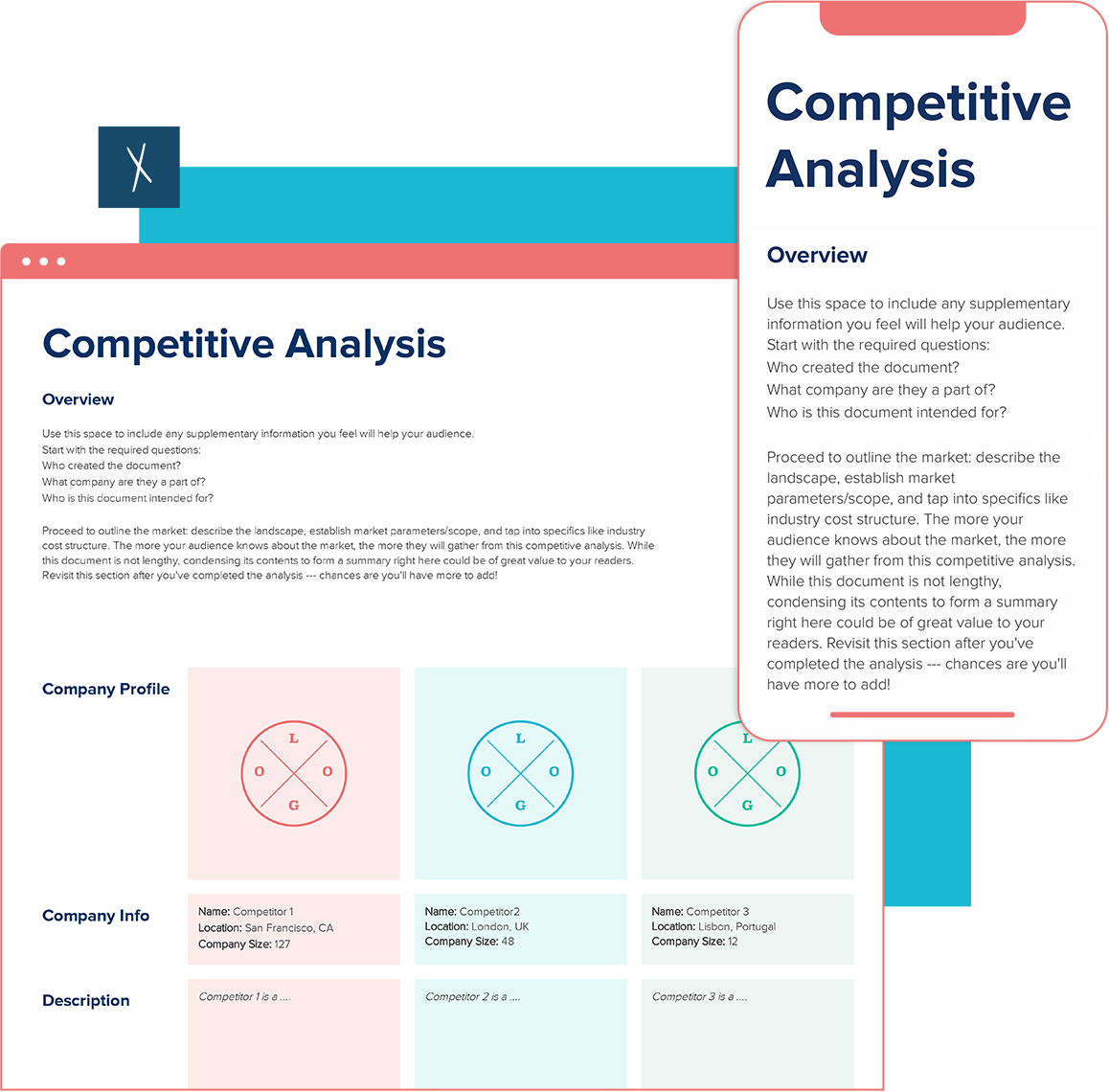
Design, manage and share beautiful living documents… easily, together. Explore Xtensio
- Click and edit anything… together.
- Customize to match your branding.
- Share with a link, present, embed or download.
